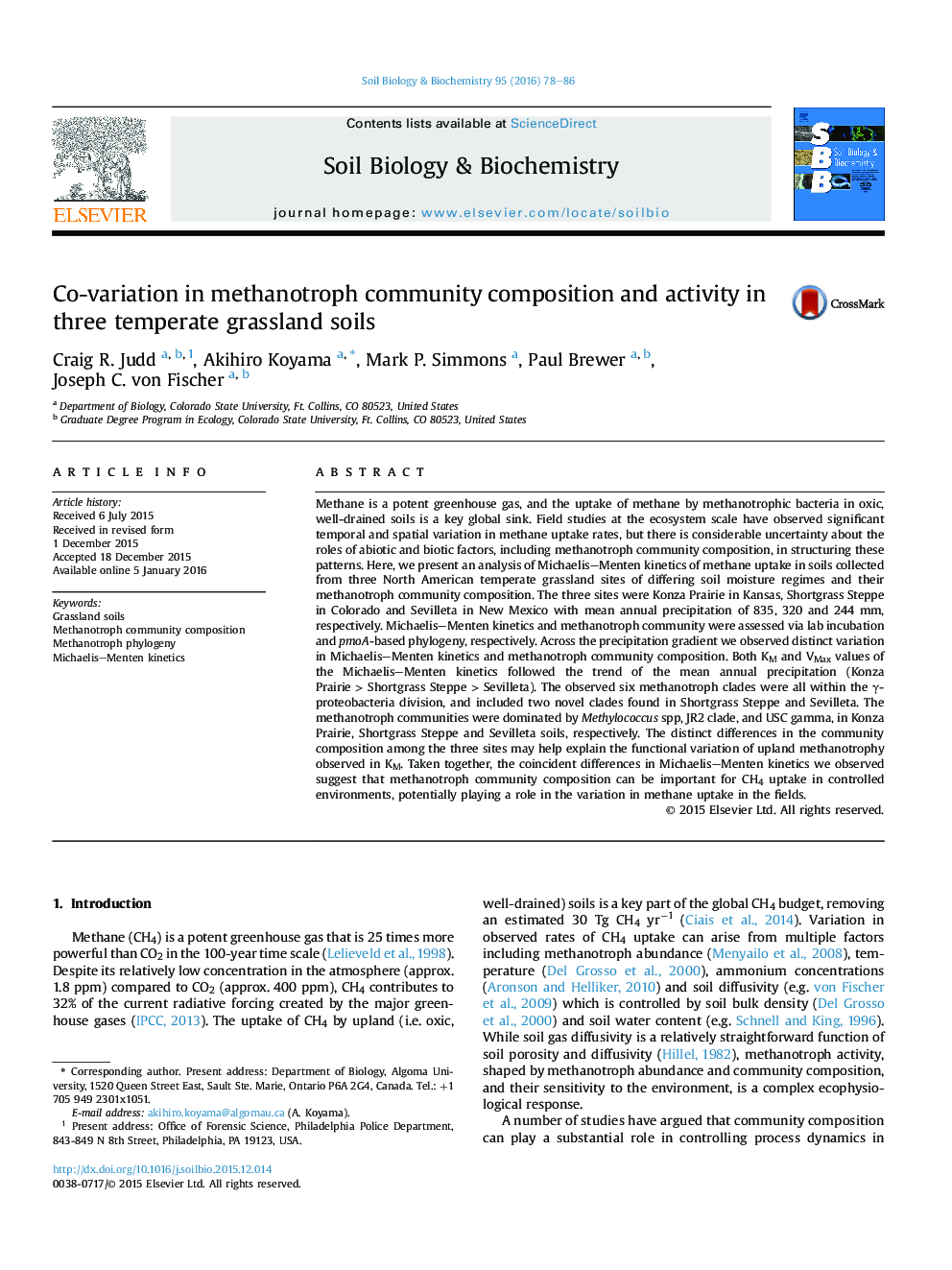| Article ID | Journal | Published Year | Pages | File Type |
|---|---|---|---|---|
| 2024267 | Soil Biology and Biochemistry | 2016 | 9 Pages |
•Three grassland soils showed distinct methanotroph community and enzyme kinetics.•Methanotroph community and Michaelis–Menten kinetics co-varied.•Two novel methanotroph clades were discovered.
Methane is a potent greenhouse gas, and the uptake of methane by methanotrophic bacteria in oxic, well-drained soils is a key global sink. Field studies at the ecosystem scale have observed significant temporal and spatial variation in methane uptake rates, but there is considerable uncertainty about the roles of abiotic and biotic factors, including methanotroph community composition, in structuring these patterns. Here, we present an analysis of Michaelis–Menten kinetics of methane uptake in soils collected from three North American temperate grassland sites of differing soil moisture regimes and their methanotroph community composition. The three sites were Konza Prairie in Kansas, Shortgrass Steppe in Colorado and Sevilleta in New Mexico with mean annual precipitation of 835, 320 and 244 mm, respectively. Michaelis–Menten kinetics and methanotroph community were assessed via lab incubation and pmoA-based phylogeny, respectively. Across the precipitation gradient we observed distinct variation in Michaelis–Menten kinetics and methanotroph community composition. Both KM and VMax values of the Michaelis–Menten kinetics followed the trend of the mean annual precipitation (Konza Prairie > Shortgrass Steppe > Sevilleta). The observed six methanotroph clades were all within the γ-proteobacteria division, and included two novel clades found in Shortgrass Steppe and Sevilleta. The methanotroph communities were dominated by Methylococcus spp, JR2 clade, and USC gamma, in Konza Prairie, Shortgrass Steppe and Sevilleta soils, respectively. The distinct differences in the community composition among the three sites may help explain the functional variation of upland methanotrophy observed in KM. Taken together, the coincident differences in Michaelis–Menten kinetics we observed suggest that methanotroph community composition can be important for CH4 uptake in controlled environments, potentially playing a role in the variation in methane uptake in the fields.
